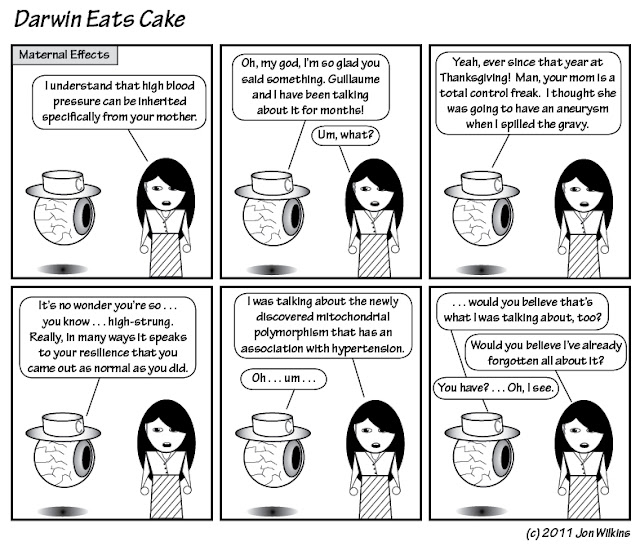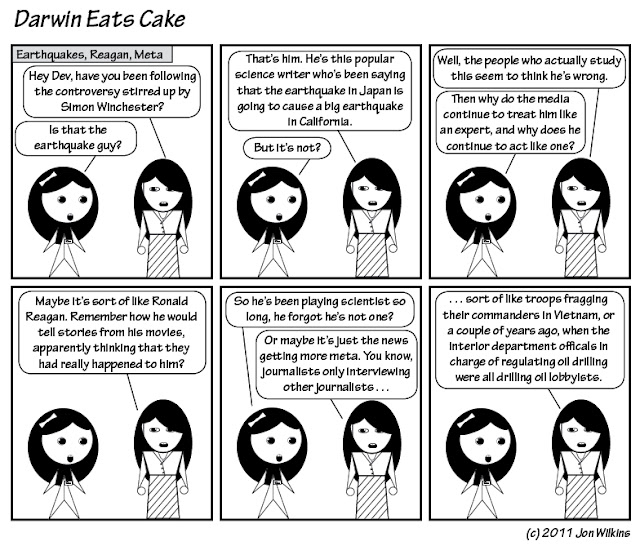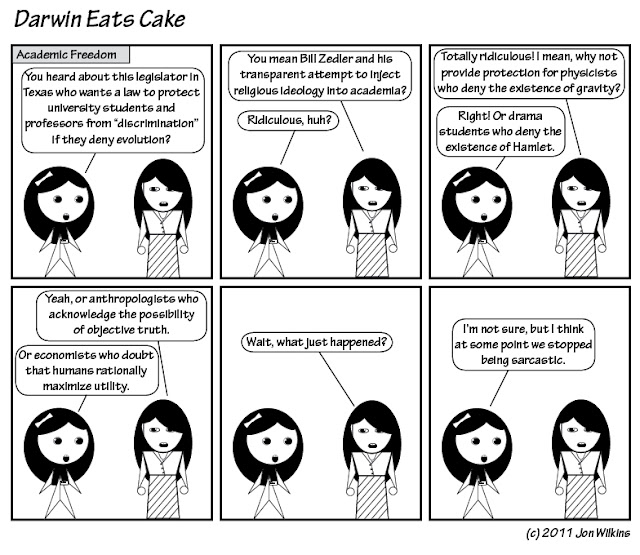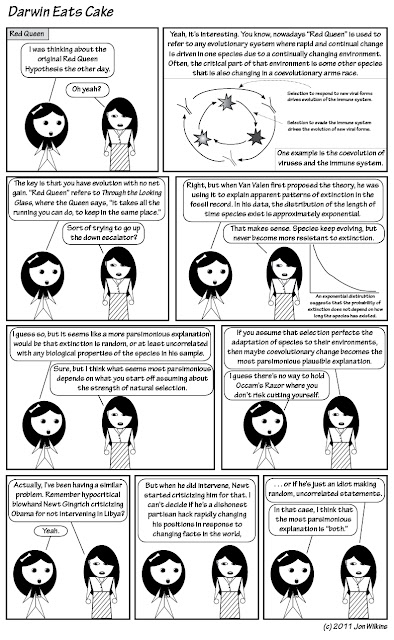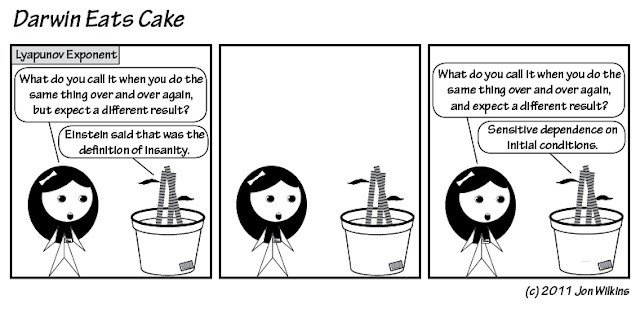So, most biologists are familiar with the quotation by Theodosius Dobzhansky, “Nothing in biology makes sense except in the light of evolution.” In fact, in my experience, if you go to a biology conference, there’s about a 50% chance that at least one of the speakers will introduce their talk with this line. What is typically not made explicit in these talks is, as opposed to what other light?
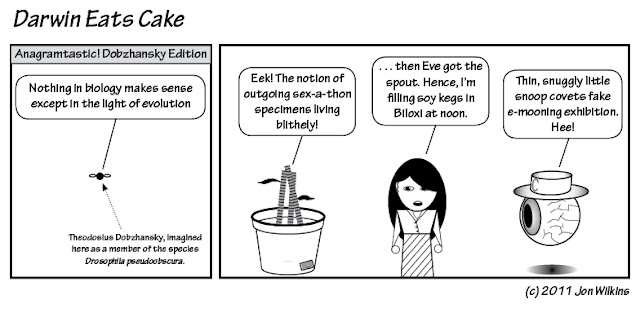 |
| Best URL for sharing: http://www.darwineatscake.com/?id=19 URL for hotlinking or embedding: http://www.darwineatscake.com/img/comic/19.jpg |
I have most often heard this quotation used when the speaker is talking to an audience of ecologists or molecular / cell biologists. While both of those fields are clearly tied into evolutionary ideas, explicit thought about evolution is often secondary to other considerations, such as accurately describing the behavior of these very complicated systems on much shorter timescales (months or years in ecology, perhaps down to milliseconds in molecular biology). My sense has always been that people pull out this quotation when they get excited about an evolutionary question in their work, but somehow they feel some anxiety about how their colleagues will react. In a practical sense, then, people seem to quote Dobzhansky when they want to ask a why question. The “as opposed to what” part would be the more descriptive what, where, when, and how questions that constitutes the bulk of the work in biology.
Since this is one of those quotations that just floats around the community, what people may not know is that this was actually the title of one of Dobzhansky’s papers. The paper, published in 1973, was written as a critique of anti-evolutionist arguments by creationists. The “as opposed to what” part, then, was originally divine intervention and intelligent design.
 |
| Theodosius Dobzhansky circa 1966. Photo via Wikipedia. |
The interesting thing about this paper is that it is written from the perspective of a religious man, and the arguments are more theological than scientific or sociological in nature. Dobzhansky himself was a committed member of the Eastern Orthodox Church. He argues that life is God’s creation, but that natural selection is the mechanism that God has chosen.
It is wrong to hold creation and evolution as mutually exclusive alternatives. I am a creationist and an evolutionist. Evolution is God’s, or Nature’s, method of Creation. Creation is not an event that happened in 4004 B. C.; it is a process that began some 10 billion years ago and is still under way.
Dobzhansky then continues with many of the now-familiar arguments for the overwhelming empirical evidence supporting the fact of evolution – in the fossil record, in the patterns of diversity of life, and in the molecular similarities among all species. What strikes me as particularly interesting in the article is the argument that he invokes to defend against claims that God deliberately created patterns that resemble those that would result from an evolutionary process – for example, the claim that God created dinosaur fossils, when no dinosaurs ever existed, or that God made dinosaur fossils appear to be much older than they actually are.
He says that to claim that God arranged things in this way is blasphemous, as it accuses Him of “systematic deceitfulness.” This, in fact, seems to be the core of Dobzhansky’s argument. The evidence is so strong that it admits only two possible explanations: either evolution is true, or God is deceitful. He rejects the latter on the grounds that such a claim would be “as revolting as it is uncalled for.”
Finally, Dobzhansky winds up with a quotation from Pierre Teilhard de Chardin:
Is evolution a theory, a system, or a hypothesis? It is much more – it is a general postulate to which all theories, all hypotheses, all systems must henceforward bow and which they must satisfy in order to be thinkable and true. Evolution is a light which illuminates all facts, a trajectory which all lines of thought must follow – this is what evolution is.
He notes that Teilhard (a Jesuit priest and paleontologist) was a deeply religious man, and that his faith was not at all in conflict with a belief in evolution and natural selection. I reproduce the quote here because it kicks ass.
Theodosius Dobzhansky (1973). Nothing in Biology Makes Sense Except in the Light of Evolution The American Biology Teacher, 35 (3), 125-129
